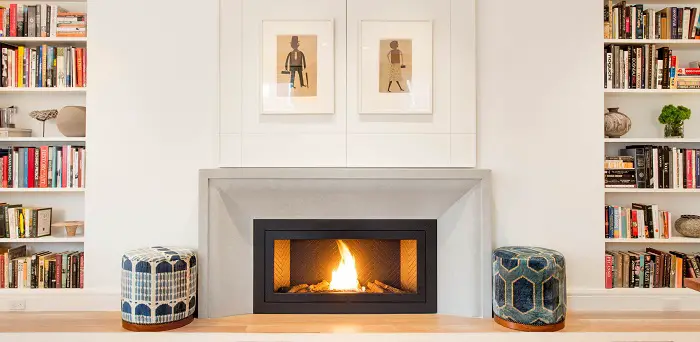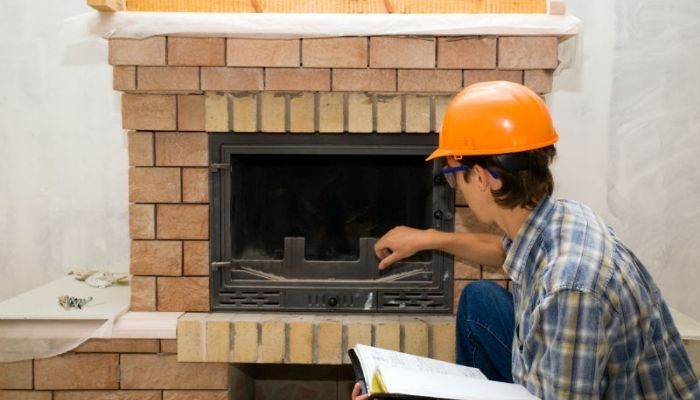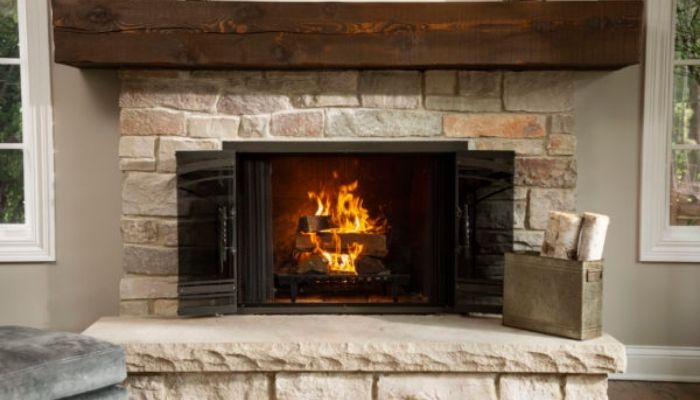What are ventless fireplaces? As the name suggests, these are fireplaces that do not necessarily need venting. However, not all of them might be safe to have in our homes. They might be built ventless by design, but you also have to look at their operations and resulting fumes, if any.
Such fireplaces may release their emissions into the home instead of releasing them outside like a vented home fireplace. The emissions include carbon monoxide and noxious gases like nitrous dioxide. The fireplaces will use the air inside the house and in the burner for combustion. In the end, the air quality in the house reduces.
The ventless fireplaces release dangerous gas emissions that pose a risk to our health. For this reason, such fireplaces are banned in different places all over the world because of possible CO poisoning. On average, more than 500 people die a year because of carbon monoxide poisoning.
In this article, we will look at why they are banned and the safety measures to practice in order to be safe in your home.
Which have states outlawed ventless gas fireplaces?
It depends on which part of the world you live in. In some countries and the majority of states have banned the installation of ventless fireplaces. In places where it is legal, there are other restrictions on how to install them. There is a limit to the type and size of the room you are installing the ventless fireplace.
In the U.S., ventless fireplaces are banned in several states. They include; Washington, Colorado, Arizona, Kansas, Nevada, South Dakota, North Dakota, Minnesota, Alaska, New Hampshire, and Texas. New York, Austin, and Texas have banned the use of such fireplaces on the city level. California and Massachusetts have also banned the use of ventless fireplaces.
The ventless fireplaces are fully banned for sale in Canada. You will face the cruel side of the law if found. They can only be used outdoors as fire features. You can also prove that there is enough air circulation for you to install it in a certain room.
Why are ventless gas fireplaces illegal?
Many homeowners would go for ventless fireplaces as they tend to look cleaner. However, they are the main culprits of carbon monoxide poisoning. This is the main reason why eyebrows have been raised on the use of ventless fireplaces.
The buildup to high levels of carbon monoxide has led to many deaths.
How to tell if a gas fireplace is ventless
There are two types of gas fireplaces; vented and ventless. A traditional vented gas fireplace uses propane and natural gas to run. There are two vents that run to the outside of the house. One is the intake vent that sucks in the fresh air into the fireplace for combustion. The other vent is the exhaust pipe that safely helps get rid of fumes as a result of combustion.
On the other hand, a ventless gas fireplace uses a regulator to produce a fine mixture of air and gas to burn cleanly. You will be able to reduce the amount of fumes that are typically produced by a traditional wood fireplace.
Also, a ventless fireplace tends to burn a bit less than a vented fireplace. There are still blowers in the ventless units to help circulate the air.
Can you put a ventless gas fireplace anywhere?
According to Galinsky, ventless fireplaces can be located in any room of your house. Traditional fireplaces require rooms with a flue to work properly. Fuel is fed into the ventless fireplace and the fire will be seen in the precise gaps of artificial logs. The regulator in the unit helps bring a proper balance between air and fuel.
You can change the location of a ventless fireplace to wherever you want. However, the flames will remain static. They help save on utility bills as no heat will escape to the outside through penetrations. Ventless fireplaces also help reduce air pollution that is caused by wood-burning fireplaces.
Can a ventless gas fireplace make you sick?
Carbon monoxide poisoning is always a risk if you are using a ventless fireplace. It is a deadly gas that is colorless and odorless, thus it accumulates to high levels without your knowledge.
The early signs of this poisoning are feeling ill or thinking of having caught a cold.
High levels of carbon monoxide cause the following;
- loss of consciousness
- dizziness
- nausea
- asphyxiation.
Having a carbon monoxide detector near a ventless fireplace will help a lot. There is not much information on how to deal with carbon monoxide poisoning.
The other health concern is the triggering of respiratory diseases. The toxic byproducts released by the fireplace are taken in with the air you breathe. The respiratory system will be damaged if you inhale large amounts of toxins over time.
Pre-existing respiratory conditions like asthma and allergies can also be triggered.
Disadvantages of ventless gas fireplace
Ventless fireplaces just like any other household appliance have their drawbacks. The cons are the reasons behind them being banned in different countries and states. These include;
- Ventless fireplaces release dangerous gases. Nitrous dioxide and carbon monoxide are the most common gases. If not controlled properly, the gases can affect our health and cause long-term effects.
- Production of high levels of greenhouse gases. Carbon monoxide is the main emission in such scenarios. In turn, there are high heat levels in the house which is uncomfortable.
- They can leave soot on the ceiling, walls, and furniture. Imagine having guests and the walls and ceilings of your house are darkened. Soot can potentially damage good furniture.
- Ventless fireplaces cause humidity and moisture buildup. The excessive water vapor being released can damage the wallpapers and other structural elements of your house. Mold issues could also be a potential problem.
- Reduction of oxygen levels in tiny spaces. You will find it uncomfortable to stay in a room with low oxygen levels. The air quality generally reduces because of these fireplaces.
Conclusion
Ventless fireplaces are cleaner to operate and will help you save on a lot of costs. However, you have to be careful when using such fireplace units. Install carbon monoxide detectors to sense when the levels are too high. Your health is the first priority. Other cautions include avoiding fire hazards. This does not mean you should never use ventless fireplaces. They have their advantages provided you follow the manufacturer’s instructions.


